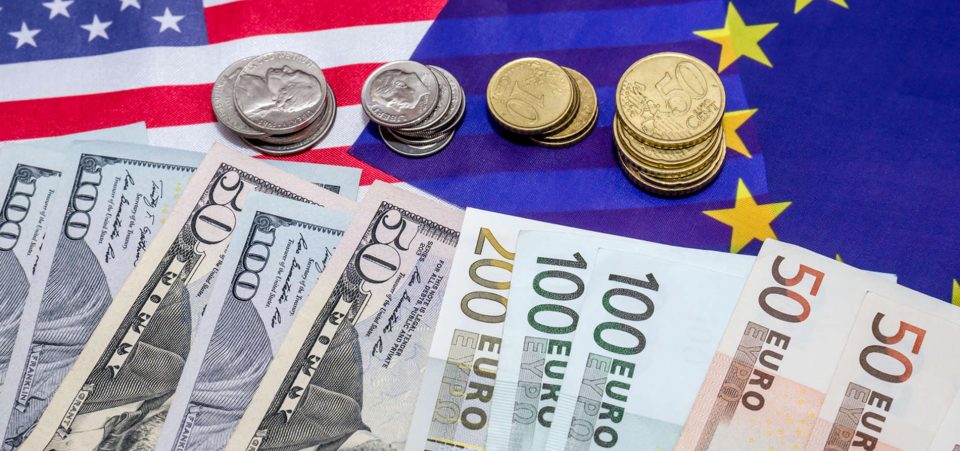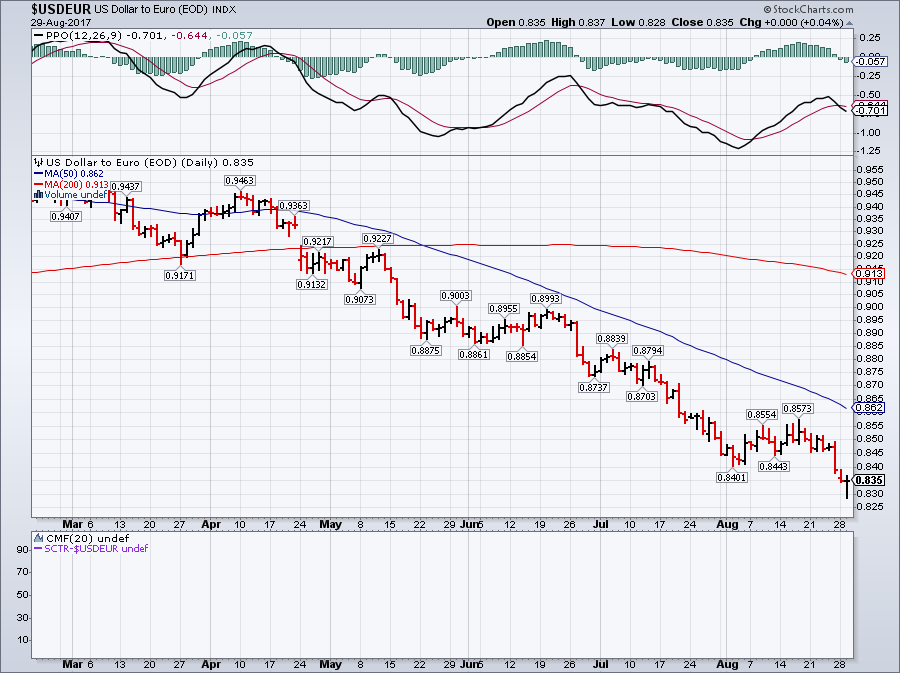How Low Can the U.S. Dollar Go?
The euro rose again on Tuesday against the greenback. This has raised serious concerns about just how low the U.S. dollar will go. We might be looking at the start of a U.S. dollar collapse. If there are any doubts over the fact that the dollar is in trouble, consider this. The euro has risen back above the $1.20 threshold for the first time since January 2015!
If you think a low dollar won’t affect your investments, think again. The Federal Reserve will intervene the only way it can, by raising rates. This could be the trigger for a major market collapse.
Few are expecting the U.S. dollar forecast for the next three months to improve. If anything, it can only get worse from here. Simply put, nobody expects the Federal Reserve and its chair, Janet Yellen, to recommend lifting the nominal interest rate in September. The U.S. economy is too weak and debt-ridden for it to sustain a hike. It would create havoc.
There might be an interest rate hike next December. But even that prospect has many question marks over it. For the Fed to raise rates, it must do so rationally and when the economy needs the shift in gears. In other words, if the overall economy, employment, and other key indicators fail to move in the right direction, a rate hike might spell game over.
But let’s consider the facts before we discuss the rate hike. Indeed, even if Yellen were to intervene to support a weak U.S. dollar, the overall economic picture is far more dangerous than anyone cares to see. The euro is gaining strength and so is the European economy. Meanwhile, European Central Bank (ECB) President Mario Draghi tried to play down the European currency’s gains during his speech at the central bankers’ summit in Jackson Hole, Wyoming, on August 25. (Source: “Yellen and Draghi had good reason for Jackson Hole reticence,” Financial Times, August 28, 2017.).
The Challenge from the Europeans
As the European economy improves, the ECB might be thinking about raising interest rates. Draghi does not want the euro to start going up right away. That would push the USD to EUR exchange rate too high. After all, Europe is still largely reliant on export-based economies. It benefits from a well-balanced USD to EUR exchange rate.
Chart courtesy of StockCharts.com
Still, in the United States, the situation is anything but certain. Draghi’s silence at Jackson Hole notwithstanding, the U.S. faces complex prospects with the budget and the threat of a government shutdown. That could happen if Congress does not agree to lift the debt ceiling. The machine of government would screech to a halt.
Moreover, President Donald Trump adds his own obstacles. He threatened to close public administrations if Congress did not approve funding for a wall on the Mexican border. (Source: “Trump Again Threatens Government Shutdown If He Doesn’t Get Border Wall Money,” The Huffington Post, August 28, 2017.)
So, the U.S. economy faces two big “man-made” challenges, both of which end with a government shutdown.
Meanwhile, the dollar is under fire. Understand that with a sudden and sharp devaluation of the dollar, many American families will feel constraints in buying even the most basic items. America’s biggest exporter by value is Boeing Co (NYSE:BA). Boeing, good as it is, does not make consumer goods most Americans buy at their local grocery stores. Not by chance, Amazon.com, Inc. (NASDAQ:AMZN) and Wal-Mart Stores Inc (NYSE:WMT) have reached the highest market capitalization peaks.
The euro is taking advantage of the weakness of the dollar, which is showing no hint of slowing down. It kept declining over the past week against a basket of reference currencies. Moreover, disasters of a more natural and human variety have put more pressure on the dollar. North Korea launched a missile, presumably capable of carrying a nuclear warhead, which flew over Japan. It landed off the eastern coast of Japan.
It shows that North Korea has the means to launch an attack against American allies and interests. In other words, President Trump will have to reply. He can’t ignore this. Japan has appealed to the UN Security Council. The situation could escalate to become another Cuban Missile Crisis. The very possibility has spooked the markets, which have already been confronted by the passage of Hurrican Harvey over Texas and Louisiana.
There Is a Way to Reverse the Dollar’s Course Without Interest Rate Hikes
The hurricane has forced the shutdown of various key refineries in Texas. That will raise fuel prices in most of the United States—if not North America as a whole. The result is that lower-income Americans will come under more pressure. Yet, the reason why this could compromise the performance of stocks on Wall Street is that Hurricane Harvey has just raised the risk level for Trump.
If the president handles the situation in Texas well, he can regain political support. He might gain enough to push through the massive tax cuts he has proposed. Why, even the government shutdown could be avoided. That would thwart U.S. dollar collapse predictions as well.
Indeed, if the dollar dropped much further, it would force the Fed to hike the interest rate. Yellen has hinted that the timing is not right now. Thus, lifting the interest rate could cause financial collapse. The markets have continued to move up, in no small way, thanks to Yellen’s decision not to lift rates at the last meeting. Nevertheless, the accumulation of risks will persuade investors to seek safer assets. The U.S. dollar index is at its lowest level since 2015. (Source: “Dollar index at lowest level since Trump’s election,” Financial Times, June 29, 2017.)
The dollar’s fall has progressed just as the yen, Swiss franc, and gold have jumped. Gold has just crossed the $1,300-per-ounce mark. That’s a level not seen since the days preceding the election of Trump to the White House.
If that weren’t enough, the greenback seemed to have achieved a comfortable altitude in August. The rise came after months of sharp decline. It could suffer more losses if the next U.S. economic statistics—such as the next set of unemployment and employment reports—fail to meet expectations. The fact is, the U.S. economy and the dollar are coming under a major bombardment of risks.
President Trump has lost key supporters, including political and economic elites. Then there has been the rise of debt ceiling jitters, alarming outbreaks of social unrest (i.e. Charlottesville), a marked deterioration in U.S.-Russia relations, and a military escalation with North Korea. Admittedly, we haven’t heard much about the standoff between Trump and former FBI director James Comey. But that’s because the other issues are so noisy that they’re drowning it out.







